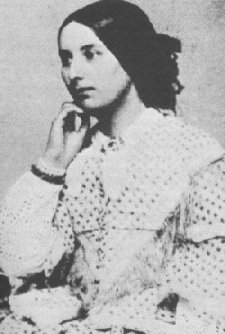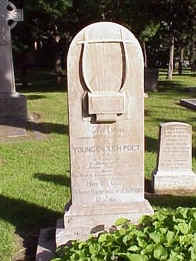Join the Risky Regencies today as Amanda and Deb Marlowe chat about their March UK releases, The Improper Aristocrat and To Catch a Rogue! Comment on the post to win a copy of each, or if you can’t wait you can buy them at Amazon.uk! Besides being a fellow Harlequin author and fun friend, Deb is another Project Runway fanatic…
Amanda: So, Deb, tell me all about your new book!
Deb: The Improper Aristocrat is my adventure book! A deathbed pledge brings Niall Stafford, Earl of Treyford, out of Egypt and back to England. He’s promised to deliver an ancient artifact to a colleague’s sister, but Chione Lattimer is not what he expects. Instead of an aging spinster, Chione is a lovely, half-Egyptian girl caught up in chaos. Though all he wants to do is get back to his adventures and antiquities, Trey finds himself in the role of protector, and smack dab in the midst of a villainous plot to recover a Pharaoh’s lost treasure.
A: Oooh, I love adventures and lost treasure! What’s your favorite part of the book?
D: Now that is a hard question. I love so much about this book! Chione was a joy to write. She’s had a hard life, and really has to find her own strength. And she has to pound a few hard lessons into Trey’s head along the way! I had a great time coming up with the clues that lead these two on their path to adventure, too.
A: Any good research tidbits you found?
D: The research was the best part! I really enjoyed exploring the Valley of the Kings, the Devon coast, and Belzoni’s Exhibition in London.
A: Tell us about Belzoni!
D: You mean my historical figure crush? Hee hee! I love this guy. One of 13 children of a Padua barber, he was a giant of a man, reportedly 6 feet 6 inches. Run from home by Napoleon’s forces, he traveled England as a strong man and magician before traveling to Egypt to uncover some of her greatest treasures, including Seti I’s tomb, the entrance to the second pyramid of Giza, and the lost city of Berenice. He procured a huge collection of antiquities for the British Museum before he died trying to reach the mysterious city of Timbuktu.
A: And what is the treasure in your story? Or is that a secret??
D: It’s a mystery! The legend of the Pharaoh’s Lost Jewel is thousands of years old. It came back to Europe with Nelson’s army and team of surveyors and architects. Chione’s family has chased the legend for years, but it will take the adventuresome Earl to help her discover the truth.
A: It’s kind of funny, my book also involves ancient treasure! Though Greek, not Egyptian. There must be something archeological in the air this month…
D: Oh, Greek! Where did the idea for your story come from?
A: From a terrific book I read, Peter Watson’s The Medici Conspiracy, about the terrible problem of illegal antiquities. His tale involves modern-day looting and illegal objects in museums, but of course this is not a new problem at all. It was also inspired by a trip to the British Museum to see the Elgin Marbles!
D: Was that on the Splendors of the Regency tour???
A: Yes!! Everyone here will be sick of me saying “On the Regency tour…”, but it really was the most inspiring thing I could have done for my writing. We learned lots about carpets and doorknobs there, didn’t we, Deb?
D: Yes, we did, although we have to thank Diane for that! Riskies, Diane became famous for grilling all the guides on the make and origins of the carpets everywhere we went. Everyone teased her unmercifully!
A: LOL! We learned a lot about paint colors, too…
Anyway, To Catch a Rogue is the first of the “Muses of Mayfair” series, stories of the 3 Chase sisters (Calliope, Clio, and Thalia) whose father is a famous scholar of ancient Greek art and myth. So, naturally the daughters are into ancient Greece, too–though their interest always seems to lead them into trouble. And romance with some unlikely heroes!
D: It feels like I’ve been waiting so long to read about your “Muses”! I can’t wait! But how are their heroes unlikely?
A: Calliope, the heroine of TCAR, thinks that Cameron de Vere, the Earl of Westwood, is the infamous Lily Thief! The Lily Thief has been plaguing London collectors for months, stealing artifacts from their collections and leaving a lily bouquet in their place. Cal thinks Cameron is the thief, and is determined to catch him in the act of stealing the Alabaster Goddess (a beautiful statue of Artemis that has started a craze for hairstyles and sandals in London fashion!). But Cameron isn’t what he appears, either. He decides to turn the tables on Cal…
D: Sounds like another fun mystery! And what about Clio and Thalia?
A: They get their stories, too, of course! In To Deceive a Duke, Clio meets up again with the mysterious Duke of Averton in sunny Sicily (which, of course, is plagued with tomb raiders!). I call Averton my “rock star” duke, because everyone follows him around and gossips about him! And in To Kiss a Count, Thalia finds love with a dangerous Italian count–in Bath! Passion in the Pump Room (also seen on the Regency tour. The Pump Room, that is. Not the passion).
Oh, one quick note! Next year you can buy these 3 stories in consecutive months in the US. But just in case you can’t wait…
Tell us what’s next for you, Deb?
D: The Improper Aristocrat come to the US late in 2008. In October I have another UK release, Her Cinderella Season. In that one, Jack Alden, brother to the hero of my first book Scandalous Lord, Rebellious Miss, locks horns with a girl who has been raised in the Reformer and Evangelical circles of Regency England.
A: Can’t wait!
BTW, gentle readers, take a look at the two covers in the header. We believe somehow Mr. Brad Pitt snuck onto Deb’s, highlights and all. And my cover is also the inside image of Diane’s Innocence and Impropriety! Who knew people so resembled each other in Regency England???
Let us know any comments, questions, whatever! Early next week we’ll announce a winner for copies of both books.

















